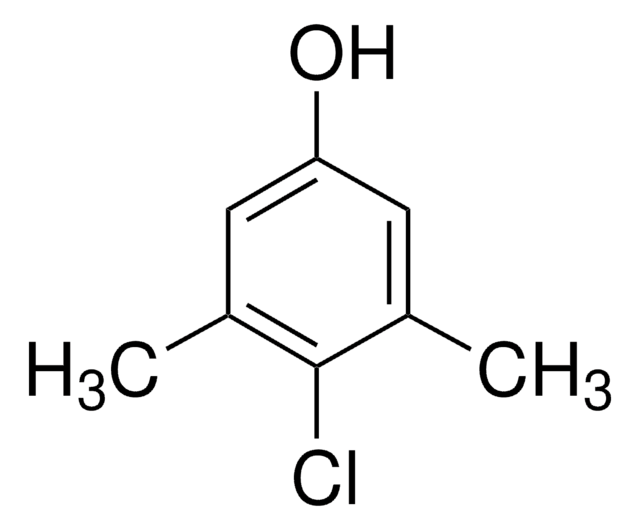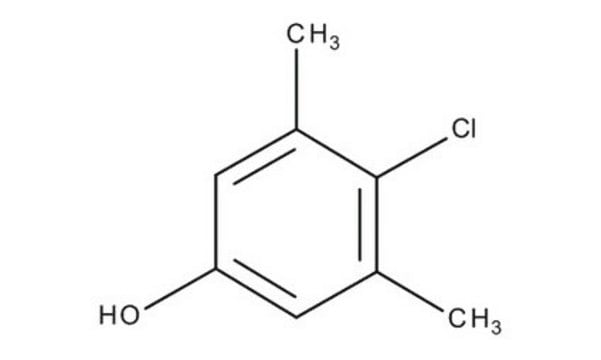24380
4-Chlor-3,5-Dimethylphenol
purum, ≥98.0% (T)
Synonym(e):
4-Chlor-3,5-xylolol, 4-Chlor-sym.-m-xylenol, PCMX
About This Item
Empfohlene Produkte
Qualität
purum
Qualitätsniveau
Assay
≥98.0% (T)
mp (Schmelzpunkt)
114-116 °C (lit.)
114-116 °C
Löslichkeit
methanol: soluble 1 g/10 mL, clear to faintly turbid, colorless to very faintly yellow
SMILES String
Cc1cc(O)cc(C)c1Cl
InChI
1S/C8H9ClO/c1-5-3-7(10)4-6(2)8(5)9/h3-4,10H,1-2H3
InChIKey
OSDLLIBGSJNGJE-UHFFFAOYSA-N
Suchen Sie nach ähnlichen Produkten? Aufrufen Leitfaden zum Produktvergleich
Verwandte Kategorien
Allgemeine Beschreibung
Signalwort
Warning
H-Sätze
Gefahreneinstufungen
Acute Tox. 4 Oral - Eye Irrit. 2 - Skin Irrit. 2 - Skin Sens. 1
Lagerklassenschlüssel
11 - Combustible Solids
WGK
WGK 1
Persönliche Schutzausrüstung
dust mask type N95 (US), Eyeshields, Faceshields, Gloves
Choose from one of the most recent versions:
Besitzen Sie dieses Produkt bereits?
In der Dokumentenbibliothek finden Sie die Dokumentation zu den Produkten, die Sie kürzlich erworben haben.
Unser Team von Wissenschaftlern verfügt über Erfahrung in allen Forschungsbereichen einschließlich Life Science, Materialwissenschaften, chemischer Synthese, Chromatographie, Analytik und vielen mehr..
Setzen Sie sich mit dem technischen Dienst in Verbindung.







